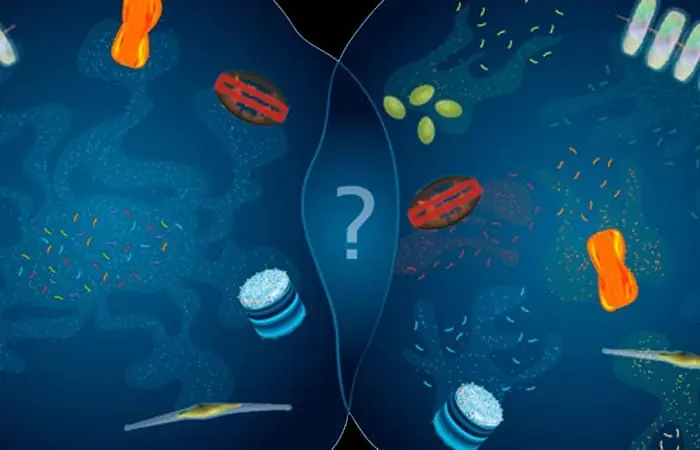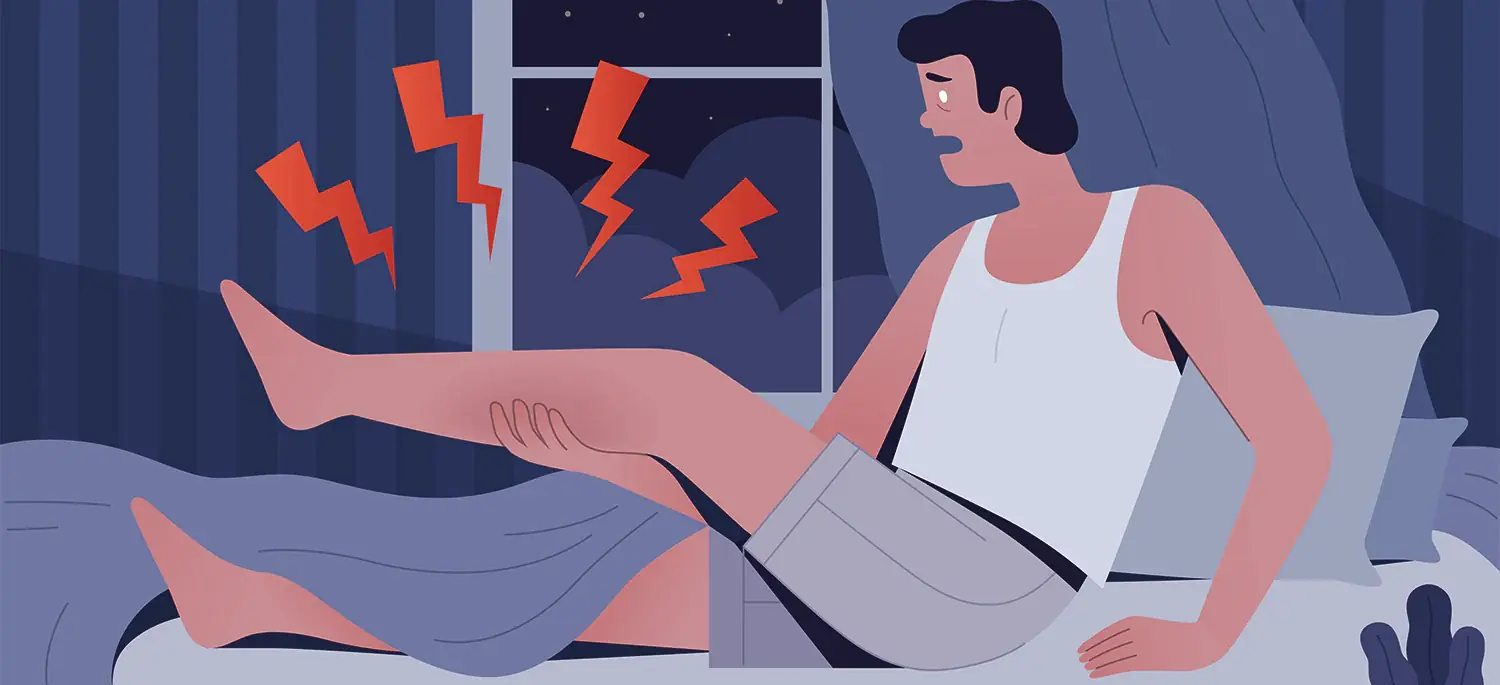
7 supermarket sale items employees advise against buying, no matter how cheap
7 Items Supermarket Staff Advise Against Buying, No Matter How Big the Discount, Due to Concerns Over Quality.

Ganglion Cyst: What It Is, Causes, and How Daily Activities Can Influence Its Growth
Ganglion cysts are non-cancerous lumps that form along the joints or tendons, most commonly on the wrists and hands. While these cysts are generally benign, they can cause discomfort or interfere with daily activities, especially when they grow larger. Understanding the causes, symptoms, and how certain daily habits can influence the development of ganglion cysts is essential for effective management and prevention.
A ganglion cyst is a fluid-filled sac that forms on the top of a joint or tendon. They are typically round or oval-shaped and can range in size from small to quite large. Although ganglion cysts are most commonly found on the wrist, they can also develop on the hands, fingers, or feet.
Ganglion cysts are believed to form when synovial fluid — the fluid that lubricates joints and tendons — leaks out and collects, forming a cyst. The cause of this fluid leakage is not always clear, but it may be related to joint irritation, trauma, or increased pressure on the area.
While the exact cause of ganglion cysts remains unclear, there are several factors related to daily activities that may contribute to their development or make them grow larger:
1. Repetitive Movements and Overuse
Repetitive stress and overuse of a joint can cause increased pressure, leading to the formation or growth of ganglion cysts. People who perform tasks that require frequent wrist or hand movements, such as typing, playing musical instruments, or repetitive lifting, may be more prone to developing these cysts. The constant strain on the joints may cause fluid to leak and accumulate, resulting in cyst formation.
2. Joint Injury or Trauma
Previous injuries or trauma to the joint, including sprains or fractures, can increase the likelihood of developing a ganglion cyst. If the area around the injured joint is repeatedly stressed or re-injured, it may exacerbate the cyst or cause it to grow larger over time.
3. Poor Posture and Hand Positioning
Poor posture, especially when using a computer or working with tools, can place unnecessary strain on the wrist and hand joints. Slouching or holding the wrist in awkward positions for long periods can affect joint health and promote the formation or enlargement of ganglion cysts.
4. Physical Strain and Lifting Heavy Objects
Lifting heavy objects or performing manual labor that requires constant gripping or bending of the wrist may increase the risk of ganglion cyst growth. Overuse of the wrist or hand without proper rest and support can lead to irritation in the tendons, causing cysts to develop or become more prominent.
5. Lack of Proper Rest and Recovery
Not allowing your hands or wrists enough time to rest and recover after strenuous activity may contribute to the formation or enlargement of ganglion cysts. Continuous stress on the joint without proper recovery time can lead to an accumulation of synovial fluid, leading to cyst formation.
Preventing ganglion cyst growth largely involves modifying daily activities to reduce stress on the affected joints. Here are some tips for managing and potentially preventing the growth of ganglion cysts:
• Take Frequent Breaks: When engaging in repetitive tasks, take breaks to reduce strain on the joints. Stretch your wrists and hands regularly to avoid stiffness and irritation.
• Proper Ergonomics: Use ergonomic tools and maintain proper posture while working or typing to avoid unnecessary pressure on the wrist and hand joints.
• Use Wrist Supports: If you engage in activities that require repetitive hand or wrist movements, consider using wrist braces or supports to reduce pressure and provide stability.
• Avoid Heavy Lifting: If possible, avoid lifting heavy objects or engaging in activities that place excess strain on the wrist and hands.
• Rest and Recovery: Make sure to give your joints time to recover after intense physical activity. Proper rest allows the body to heal and prevents the buildup of fluid that leads to cyst formation.
If you notice a ganglion cyst that is causing discomfort, swelling, or pain, it's important to consult a healthcare provider. Although most ganglion cysts are benign and don't require treatment, your doctor can help determine if intervention, such as drainage or surgery, is necessary. In some cases, ganglion cysts may interfere with normal activities or cause significant discomfort, in which case professional treatment may be required.
Ganglion cysts are a common but manageable condition that can interfere with daily life, especially if they grow in size. While the exact cause is not always clear, repetitive movements, joint injuries, and improper hand positioning can contribute to their development and growth. By being mindful of these daily activities and taking steps to protect your joints, you can reduce the risk of developing ganglion cysts or prevent them from growing larger. Always consult a healthcare professional if you have concerns about a ganglion cyst or if it causes pain or discomfort.
Mayo Clinic - Ganglion cysts: Symptoms, causes, and treatments.
Johns Hopkins Medicine - Ganglion Cysts: Diagnosis and Treatment.
Healthline - Ganglion Cysts: Causes, Symptoms, and Treatment Options.
WebMD - Ganglion Cyst Overview.
This article is based on the latest medical research and expert advice to help you understand the causes, effects, and preventative measures associated with ganglion cysts.

7 Items Supermarket Staff Advise Against Buying, No Matter How Big the Discount, Due to Concerns Over Quality.

As consumers become increasingly cautious about the quality of cooking oils, many are turning to animal fats as a complete alternative. But is this truly a wise decision for health?

A woman from Guadeloupe has been identified as the only person in the world with a completely new blood type

It’s not the air conditioner, but the refrigerator that’s the real culprit behind your skyrocketing electricity bills. Improper placement of this appliance can also lead to increased energy consumption.

Heavy metal pollution has become an invisible threat to modern human health. Studies reveal that up to 87% of people have varying levels of heavy metals lingering in their bodies.


Esophageal cancer is becoming a significant health threat. This article will explore the key risk factors, high-risk groups, and underlying conditions that may lead to esophageal cancer, helping you gain a deeper understanding of this dangerous disease.

Not All Bananas Are Worth Buying: 4 Types You Should Avoid, Even at Discounted Prices

While many popular brands promise superior protection, the reality is that some products fail to meet the standards necessary to effectively safeguard your skin.

The recent case of lead poisoning from a metal water bottle serves as a stark reminder of the potential health risks associated with using old or damaged bottles.

The recent surge in hepatitis A infections across Europe and the UK serves as a reminder of the importance of proper food hygiene and vaccination, especially when traveling to regions with higher risks of the virus.

Discover the fascinating world of marine viruses and their vital role in ocean ecosystems. With up to 10 million virus particles in a single drop of seawater, learn how these tiny entities influence microbial populations, nutrient cycles, and the environm

While turkey neck can be a cosmetic concern, there are several non-invasive treatments and lifestyle changes that can help improve the appearance of sagging neck skin.

Discover the foods you should avoid for a healthy heart, including trans fats, excess sugar, and processed meats.

Struggling with leg cramps at night? Learn about common causes of night leg cramps and effective solutions to prevent and relieve them.

Discover the amazing health benefits of eating bananas every day. From improved digestion and heart health to boosting mood, find out how this simple fruit can transform your body. Learn more in our comprehensive guide.

Learn how magnesium supports bone health, blood sugar management, anxiety relief, and digestive health. Find out the best forms, dosages, and foods rich in magnesium to boost overall well-being and manage health conditions.

Discover the health benefits of cabbage, from its anti-cancer properties to digestive support. Learn who should avoid cabbage due to thyroid issues, blood clotting disorders, and more. Understand its nutritional value and side effects for a healthier diet


7 Items Supermarket Staff Advise Against Buying, No Matter How Big the Discount, Due to Concerns Over Quality.

As consumers become increasingly cautious about the quality of cooking oils, many are turning to animal fats as a complete alternative. But is this truly a wise decision for health?

A woman from Guadeloupe has been identified as the only person in the world with a completely new blood type

It’s not the air conditioner, but the refrigerator that’s the real culprit behind your skyrocketing electricity bills. Improper placement of this appliance can also lead to increased energy consumption.

Heavy metal pollution has become an invisible threat to modern human health. Studies reveal that up to 87% of people have varying levels of heavy metals lingering in their bodies.

By incorporating these natural methods into your daily routine, you can strengthen your teeth, support your gums, and prevent further decay.


Agatha Christie, the Queen of Crime Fiction, vanished for 11 days in 1926, leaving the world in suspense. Discover how personal heartbreak led to her greatest creative revival and the birth of her most iconic works.

Parents of tweens and teens, listen up! Discover the powerful 'Add 20% Rule' for effective communication. Learn why assuming your child knows more than you think about topics.

Esophageal cancer is becoming a significant health threat. This article will explore the key risk factors, high-risk groups, and underlying conditions that may lead to esophageal cancer, helping you gain a deeper understanding of this dangerous disease.

Yvette Kahn’s tragic story is a powerful reminder of innocence lost during the Holocaust. Despite the horrors she faced, Yvette found music in a world that tried to silence her. Remembering her is a call to preserve the beauty and resilience of childhoo

This DIY flaxseed-based skincare routine offers a natural, affordable, and effective way to combat wrinkles and promote a more youthful appearance.

Kandice Pritchard-Harmon's adoption as a preteen began a journey filled with identity struggles and cultural shifts. Discover how her quest for freedom led to a transformative enlistment in the U.S. Army, building resilience, global experiences, and a pow


Try these simple, effective remedies and enjoy the benefits of natural hair care. O

Carla’s curiosity led her to follow two lonely twin girls in the park, but what she uncovered about their tragic home life sh0cked her to the core.

Natural remedies, on the other hand, provide a safe, affordable, and effective way to promote thicker, longer, and healthier eyelashes over time.

After years of looking down on his ex-wife, Anton's world is turned upside down when he sees her in a luxurious mansion, living a life he never imagined. A gripping tale of pride, revenge, and the consequences of underestimating someone’s strength.

Packed with skin-loving nutrients like vitamin C, antioxidants, omega-3 fatty acids, and collagen-boosting compounds, this gel can transform your skin, providing deep hydration, elasticity, and a youthful glow.

Not All Bananas Are Worth Buying: 4 Types You Should Avoid, Even at Discounted Prices